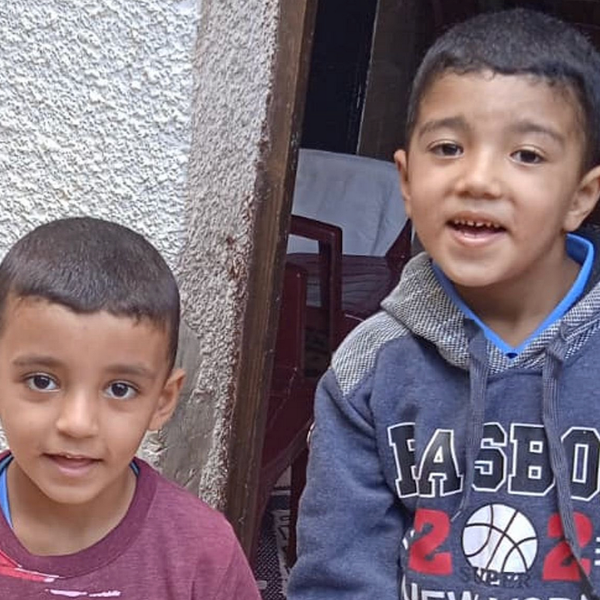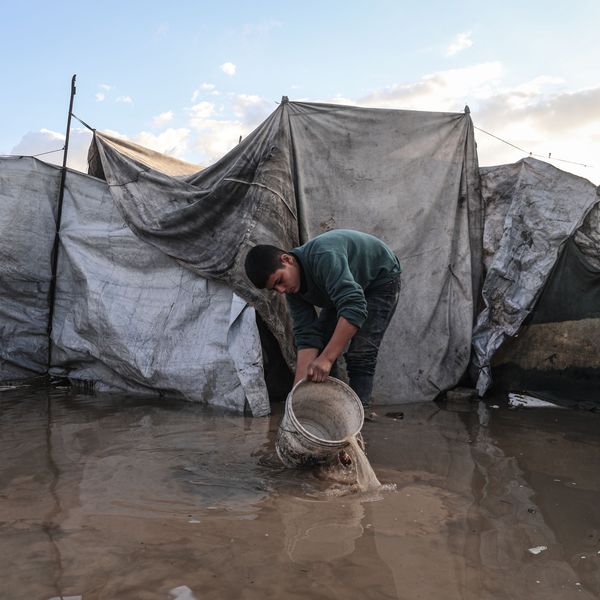Wednesday (7/16/14) the New York Times posted its first account of the Israeli strike that killed four young Palestinians on a beach in Gaza. The headline looked like this:
That headline appropriately conveys the horrors witnessed and documented by the Times reporters.
But at some point-around 9:00 pm, according to the website Newsdiffs-the headline was changed to the version that appears on the front page of the New York Times on Thursday: "Boys Drawn to Gaza Beach, and Into Center of Mideast Strife."
Was there something wrong with noting in the headline that the boys were killed? Do readers learn more being told they were "drawn into strife"?
Headlines are one very prominent way that news stories are framed. In this case, it does a disservice to the reporting underneath.
There's a television equivalent to a headline-the information an anchor provides to introduce a piece. The NBC Nightly News Wednesday night (7/16/14) led with Gaza, and the segment by Richard Engel was vivid and powerful. But anchor Brian Williams' introduction included this comment:
When Hamas launches rockets from Gaza, Israel hits back.
Like the Times, that set-up does a disservice to the story that it introduces-and serves to instruct viewers that Israel's strikes should be thought of as retaliatory, laying ultimate responsibility on Palestinians for their own deaths.
An Urgent Message From Our Co-Founder
Dear Common Dreams reader, The U.S. is on a fast track to authoritarianism like nothing I've ever seen. Meanwhile, corporate news outlets are utterly capitulating to Trump, twisting their coverage to avoid drawing his ire while lining up to stuff cash in his pockets. That's why I believe that Common Dreams is doing the best and most consequential reporting that we've ever done. Our small but mighty team is a progressive reporting powerhouse, covering the news every day that the corporate media never will. Our mission has always been simple: To inform. To inspire. And to ignite change for the common good. Now here's the key piece that I want all our readers to understand: None of this would be possible without your financial support. That's not just some fundraising cliche. It's the absolute and literal truth. We don't accept corporate advertising and never will. We don't have a paywall because we don't think people should be blocked from critical news based on their ability to pay. Everything we do is funded by the donations of readers like you. Will you donate now to help power the nonprofit, independent reporting of Common Dreams? Thank you for being a vital member of our community. Together, we can keep independent journalism alive when it’s needed most. - Craig Brown, Co-founder |
Wednesday (7/16/14) the New York Times posted its first account of the Israeli strike that killed four young Palestinians on a beach in Gaza. The headline looked like this:
That headline appropriately conveys the horrors witnessed and documented by the Times reporters.
But at some point-around 9:00 pm, according to the website Newsdiffs-the headline was changed to the version that appears on the front page of the New York Times on Thursday: "Boys Drawn to Gaza Beach, and Into Center of Mideast Strife."
Was there something wrong with noting in the headline that the boys were killed? Do readers learn more being told they were "drawn into strife"?
Headlines are one very prominent way that news stories are framed. In this case, it does a disservice to the reporting underneath.
There's a television equivalent to a headline-the information an anchor provides to introduce a piece. The NBC Nightly News Wednesday night (7/16/14) led with Gaza, and the segment by Richard Engel was vivid and powerful. But anchor Brian Williams' introduction included this comment:
When Hamas launches rockets from Gaza, Israel hits back.
Like the Times, that set-up does a disservice to the story that it introduces-and serves to instruct viewers that Israel's strikes should be thought of as retaliatory, laying ultimate responsibility on Palestinians for their own deaths.
Wednesday (7/16/14) the New York Times posted its first account of the Israeli strike that killed four young Palestinians on a beach in Gaza. The headline looked like this:
That headline appropriately conveys the horrors witnessed and documented by the Times reporters.
But at some point-around 9:00 pm, according to the website Newsdiffs-the headline was changed to the version that appears on the front page of the New York Times on Thursday: "Boys Drawn to Gaza Beach, and Into Center of Mideast Strife."
Was there something wrong with noting in the headline that the boys were killed? Do readers learn more being told they were "drawn into strife"?
Headlines are one very prominent way that news stories are framed. In this case, it does a disservice to the reporting underneath.
There's a television equivalent to a headline-the information an anchor provides to introduce a piece. The NBC Nightly News Wednesday night (7/16/14) led with Gaza, and the segment by Richard Engel was vivid and powerful. But anchor Brian Williams' introduction included this comment:
When Hamas launches rockets from Gaza, Israel hits back.
Like the Times, that set-up does a disservice to the story that it introduces-and serves to instruct viewers that Israel's strikes should be thought of as retaliatory, laying ultimate responsibility on Palestinians for their own deaths.


